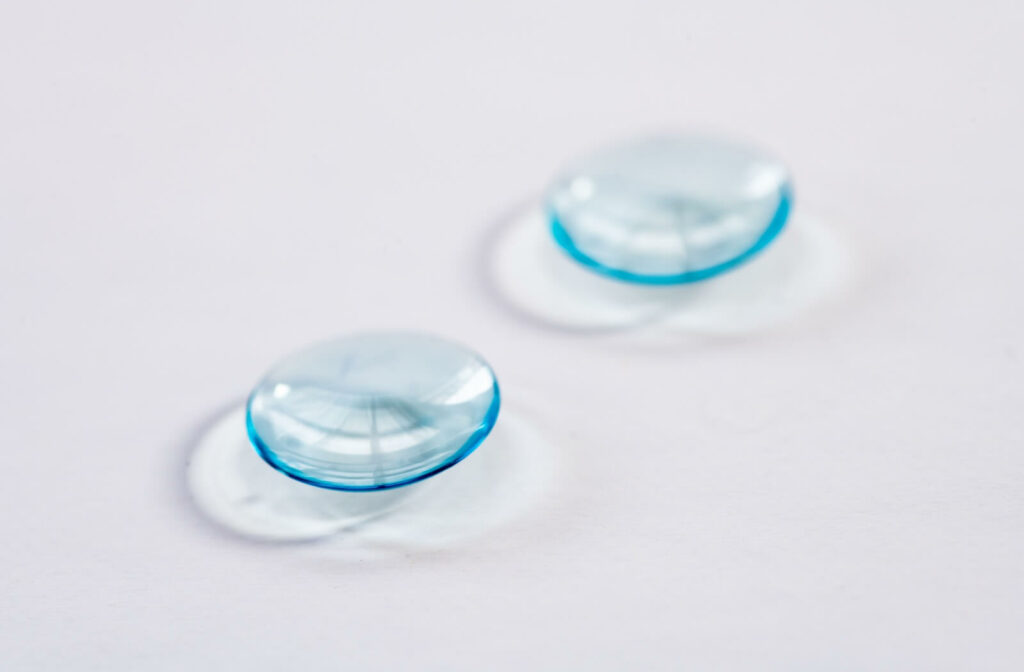As you get older, you may find yourself holding your phone farther away or squinting to read a menu in a dim restaurant. This common change in near vision is often part of the natural aging process, and it’s known as presbyopia. If you already wear glasses or contacts, developing presbyopia may mean that you need different prescriptions for different distances.
Multifocal contact lenses are a modern option designed to incorporate multiple prescriptions into a single lens, thereby helping you focus on objects at all distances. Based on the results of a comprehensive eye exam and a contact lens fitting, we can help you find lenses that not only meet your lifestyle needs, but also eliminate the need to carry around a pair of reading glasses.
A Clearer View at Any Distance
Multifocal lenses are designed to address the focusing challenges that come with presbyopia. Presbyopia is a natural age-related vision condition where the lens of your eye gradually becomes less flexible. This change makes it more difficult to shift focus from distant objects to near ones.
Multifocal contacts work by providing different zones of power within the lens itself. Your brain learns to automatically look through the correct part of the lens for the task at hand. This allows for clear, continuous vision from near to far without the hassle of switching eyewear.
Multifocal Lenses vs. Regular Contacts
A standard contact lens has one prescription power across the entire lens. This design is effective for correcting nearsightedness or farsightedness, providing clear vision at a single distance. There are many different contact lens types, but if you already wear contacts for distance vision, you’ll likely still need reading glasses for close-up tasks once presbyopia begins to develop.
Multifocal lenses, on the other hand, incorporate different prescription powers into one lens. This clever design helps your eyes transition smoothly between viewing distances. It can be a convenient alternative for those who want freedom from glasses.
Multifocal vs. Bifocal Lenses
You might be familiar with bifocal eyeglasses, which have a distinct line separating two prescription zones. While the goal is similar, multifocal contact lenses offer a more gradual transition between powers. There is no visible line on the lens, which allows for a more natural visual experience when compared to some bifocal eyeglass lenses.
This smooth shift can make adjusting to the lenses easier for many people. It also removes the distracting “image jump” that can occur with traditional bifocals when you look down to read. The focus change with multifocals often feels more fluid and intuitive.
The Different Types of Multifocal Designs
Not all multifocal contact lenses are the same—they come in several designs to suit different eyes and visual needs. During a contact lens exam and fitting, we can determine which type may work for you. The main designs work in slightly different ways to achieve clear vision at all ranges.
- Concentric Design: These lenses look like a bullseye, with alternating rings of near and distance prescription powers. Your pupil will look through both powers at the same time, and your brain will learn to focus on whichever image is most relevant at the time. The center of the lens can be set for either near or distance vision.
- Aspheric Design: In this design, the prescription power changes gradually from the center of the lens to the edges. It offers a smooth, blended progression of powers, much like progressive eyeglass lenses. Your brain adapts to use the part of the lens you need for a specific distance.
- Segmented Design: This type of lens is similar to bifocal glasses, with a firm separation between prescription zones. The top and central parts of the lens are typically for distance, while the bottom portion is for near vision. This design is less common in soft contact lenses but is available in rigid gas permeable lenses.

What to Expect with Multifocal Contacts
Switching to any new type of contact lens requires an adjustment period, and multifocal lenses are no exception. Your eyes and brain need some time to learn how to work with the new lens design. Patience is key as you adapt to a new way of seeing the world.
The Initial Adjustment Period
It can take anywhere from a few days to a couple of weeks to feel fully comfortable with your multifocal contacts. During this time, your brain is training itself to automatically select the right prescription zone for what you’re looking at. We recommend wearing your lenses as much as possible to help speed up this process.
Consistency is important during the first week or two. Try to wear your lenses in various settings—at home, at work, and outdoors—and make sure to follow your optometrist’s instructions for proper contact lens care.
Potential Drawbacks & Challenges
While your brain is adapting to your new lenses, you might notice some temporary visual effects. These are a normal part of the process and often diminish over time. It’s helpful to know what you might experience so you can feel prepared.
Some common effects during the adjustment period include:
- Slightly soft or hazy vision, particularly at first
- Glare or halos around lights, which can be more noticeable at night
- Reduced sharpness when doing tasks in low light conditions
Are Multifocal Lenses a Good Fit for You?
While multifocal contacts are a popular choice for many people with presbyopia, they may not be the right solution for everyone. A comprehensive eye exam and contact lens fitting are the first steps to determine if they align with your vision and lifestyle needs. Your eye shape, prescription, and daily activities all play a role in finding a good fit.
Who Can Wear Multifocal Lenses?
These lenses are designed primarily for individuals who have presbyopia and want to continue wearing contacts instead of switching to glasses. There are many options available today, including lenses for daily, bi-weekly, or monthly replacement schedules. You can even find multifocal toric lenses that simultaneously correct for astigmatism.
If you enjoy an active lifestyle or simply prefer the look and feel of contact lenses, multifocals can be a great way to maintain that freedom. They allow you to see clearly without constantly reaching for reading glasses.
When Another Solution Might Be Better
Certain eye health conditions can make wearing multifocal contacts more challenging. For example, people with severe dry eye may find them less comfortable, though dry eye therapy services can often help improve comfort. The design of your contact lenses and your individual tear film quality are important factors to consider.
Your prescription also matters—very high prescriptions or complex cases of astigmatism might be better served by another vision correction method. A full evaluation of your eyes can help determine if multifocal lenses are a suitable choice for you. We can assess your eye health and discuss your visual goals to recommend a personalized solution.
Visit Your Optometrist
Visit us at Precision Eye Care for routine eye exams, trend-setting eyewear, and a welcoming touch that will make you and your family feel at home. Book an appointment today to prioritize your eye health and find the vision solution that works for you.



